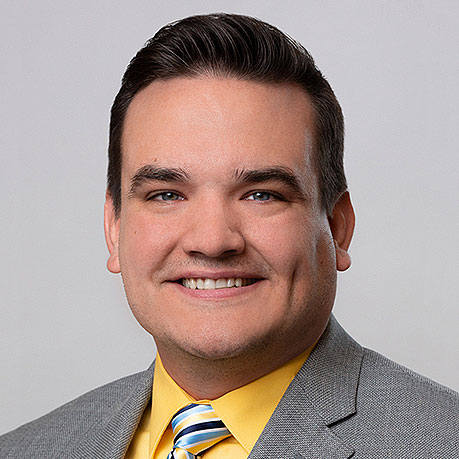FHA Streamline Refinance Loan Guide
FHA streamline refinances allow you to easily refinance from one FHA loan into another without many of the tedious steps involved in a traditional refinance. They can save money, time, and hassle and, sometimes, even make qualifying for your new loan easier.
If you already have an FHA loan and are looking to refinance, a streamline refinance may be the way to go. Here’s what to know about this option and what it means for you.
An FHA streamline refinance is a refinancing option for existing FHA borrowers. It might be a good idea if you want a fast, low-cost refinance or if your credit score or home value has decreased. It’s not the right option if you have a conventional, VA, USDA, or jumbo loan or if you want to take cash out with your refinance.
FHA Streamline Refinance Requirements
Firstly, you must have an existing FHA mortgage loan before considering an FHA streamline refinance. In other words, no other types of mortgage loans qualify.
Beyond this, you also need to:
- Have had the loan for at least 210 days: Counting from your closing date, you must have your loan for about seven months before you can get an FHA streamline refinance. Additionally, six months must have passed since your first payment due date.
- Be current on your payments: To qualify for a streamline refinance, you must have no late payments in the last six months, and you can only have one 30-day late payment in the past 12 months.
- Prove you’ll receive a “net tangible benefit”: You can only do an FHA streamline refinance if you can financially benefit from it. This requires at least a 0.5% reduction in your combined rate (mortgage interest rate + mortgage insurance premium (MIP) rate), a change from an adjustable rate to a fixed one, or a new term that reduces your payments or long-term interest costs.
Additionally, like FHA purchase loans, you must pay MIP to close on a refinance. Upfront, this comes to 1.75% of the total loan amount. There are also annual premiums that vary based on your loan term, loan amount, and other details.
Pros and Cons of an FHA Streamline Refinance
FHA streamline refinance loans can be very beneficial to those who qualify. Here are the main advantages and disadvantages they have to offer:
Pro: Easier Qualification
Most of the time, you won’t need a credit check or income verification when applying for a streamline refinance, which can make it easier to qualify if you’ve seen a cut in income or your credit score has fallen.
You likely won’t need an appraisal either. This can be beneficial if your home has lost value and you don’t have much equity in the property.
Pro: A Faster Process
Without tedious steps like income verifications or home appraisals, FHA streamline refinances are able to move a lot faster than traditional refinance loans do. You can often close on a streamline refinance in just a few weeks.
Pro: Lower Costs
Streamline refinances can be cheaper than traditional refinances since you don’t have to pay pricey fees for appraisals and credit checks. There also may be lower underwriting fees.
On top of this, FHA streamline refis must deliver a tangible financial benefit. That typically means lower monthly payments, though it could also mean a reduction in long-term interest costs (or even both).
Con: Upfront Costs
Streamline refinances don’t come for free. While they may not have all the fees of a traditional refinance, you still need to cover the upfront MIP as well as other common closing costs. Always look over your loan estimate carefully to be sure you’ve budgeted properly for these costs.
Con: MIP Double-Down
The upfront MIP fee is meant to be a one-time cost, and at 1.75% of the loan amount, it can be quite pricey. If you refinance, you need to pay this upfront cost again, only adding to the total long-term costs of your loan.
If you got your original loan within the last three years, you should be due a partial MIP refund. These refunds vary based on how long ago you closed on your loan and go up to 80% of your original premium. For example, if you refinance your FHA loan within 12 months of the purchase, you will receive a refund of 58% of your upfront MIP.
However, if you wait the full three years to refinance, you will only receive a refund equal to just 10% of your upfront MIP. This refund will not be a cash payment but instead will be applied to the upfront MIP payment needed when you refinance a new FHA loan.
Con: Cash-Out Limitations
Cash-out refinances can be a great way to tap your home equity and refinance your mortgage in one fell swoop. Unfortunately, these aren’t really possible with FHA streamline refinances since the Department of Housing and Urban Development caps the cash-out amount at a mere $500 on these loans.
Is an FHA streamline refinance a good idea?
An FHA streamline refinance can be a very smart move for the right borrower, but whether it’s right for you depends on your goals, finances, and how long you’ve had the loan. Use the guidelines below to determine if one fits your situation.
The FHA Streamline is Good If You…
- Are worried about qualifying for a refinance due to your credit score or home value
- Want a faster and easier refinancing process
- Don’t think your home will appraise for a very high amount
- Already have an FHA loan
- Want to reduce your monthly or long-term costs
Skip This Option If You…
- Don’t have an existing FHA mortgage loan
- Want to take a lot of cash out
- Have been late on your monthly payments several times
- Have had your loan for less than six months
- Won’t see a net tangible benefit from the refinance
- Don’t want to pay an upfront MIP twice
Other FHA Refinance Options
A streamline refinance isn’t your only option if you have an existing FHA mortgage loan. Another option is different types of FHA refinances, like a simple or cashout refinance. You can also look at conventional loans, jumbo loans, VA loans, or USDA loans for refinancing, depending on what you need.
Here’s how all the alternatives compare:
| Refinance Type | Eligibility Requirements* | Loan Limits | Cash-out allowed? | Appraisal and credit check required? |
|---|---|---|---|---|
| Conventional |
620 credit score 45% debt-to-income ratio 3% down payment |
$806,500 | Yes | Usually |
| USDA |
620 credit score (minimum scores set by lenders) 41% debt-to-income ratio No down payment Must have a home in an eligible rural area |
None | No | Yes |
| VA |
No credit score minimum (usually 620, but varies by lender) 41% debt-to-income ratio No down payment Must be a Veteran or military member |
None | Yes | Yes |
| Jumbo | Requirements vary by lender | Varies by lender but higher than other options | Yes | Yes |
*VA and USDA loans are regulated by the VA and HUD (respectively) and set general requirements, however, lenders can set credit score minimums above those benchmarks.
FAQs About The FHA Streamline Refinance
Can you finance closing costs on an FHA streamline refinance?
You cannot finance your closing costs with an FHA streamline refinance as you can with some traditional refinancing. Fortunately, closing costs are often lower, as there are no appraisals or credit check fees.
Do I have to refinance with my existing mortgage lender?
You do not have to use your existing mortgage lender when using an FHA streamline refinance or any refinance, for that matter. You are free to shop around for the best service and rates.
Will an FHA streamline refinance affect my credit score?
An FHA streamline refinance shouldn’t impact your credit score, as the lender is not checking your credit in the process. A traditional refinance includes a credit check, though, and often lowers your score by at least a few points.
Get Started on an FHA Streamline Refinance Today
If you have an FHA loan and are considering a refinance, the FHA’s streamline program is an option. Reach out to a loan specialist to see if it’s the right move for you.
Are you eligible for a FHA home loan?
Talk to one of our loan experts to see if you qualify.
Get started
